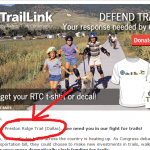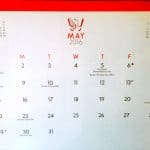Just about every health, fitness or wellness business needs an email newsletter. It’s bar far the best way to stay top of mind with current and potential clients.
Keep these fundamentals in mind:
1) Start small.
Don’t fret if your newsletter is short. That’s perfectly OK. In fact, it’s great!
You probably don’t have time to write a long newsletter, and subscribers really don’t want a long, dry article every week or month either.
And unless you’re exclusively online: Before you worry about promoting your newsletter on your website, make sure you’ve got a process to get subscriptions from customers who visit your brick-and-mortar business.
2) If you already have a newsletter, actually send it.
Yes, we’re serious. In our experience, at least 85% of the wellness businesses that promote an e-mail newsletter actually NEVER send it to subscribers! Amazing but true. I can’t tell you how many e-mail newsletters I personally have subscribed to and never once received.
Since the goal of a newsletter is to keep your business “top of mind” for subscribers, sticking to a consistent publishing schedule is critical.
Our theory is that wellness businesses sometimes promote a newsletter before thinking through how they’re actually going to produce it. Make sure you’ve got your plan in place. Do a couple of dry runs before you start promoting your newsletter in your business and on your website.
Although it sounds counterintuitive, it’s often easier for wellness businesses to publish a very short newsletter every 1-2 weeks than it is to publish only once a month. A more frequent schedule forces you to plan creation of the newsletter as part of your normal routine. Publishing only once a month encourages procrastination…and before you know it, next month’s already arrived.
3) Make your newsletter e-mail and mobile friendly.
Subscribers glance very, very briefly — literally a few seconds — at each edition to decide whether to read it more closely. They simply won’t read long articles. Make articles easy to read by using white space, bullets, and graphics as suitable.
Put your business name in the “Sender” field. Make the subject line meaningful to subscribers. Say your business serves expectant couples and this week’s newsletter has a feature on stress management. Instead of putting “Volume 3, Issue 12” in the subject line, say “Balancing It All Until Your First Baby Arrives”. Put the most important part of the subject line first.
And of course, test all the links and include an Unsubscribe option — that’s a CAN-SPAM requirement.
4) Make it easy for subscribers to “connect” with your business.
Limiting your newsletter to mini-lectures on healthy living misses a golden opportunity to encourage subscribers to engage with your business even when they’re not actually buying something. Remember, anything that keeps your business “top of mind” will pay off when they ARE in a buying mood.
For example, you could offer a link to an online healthy eating quiz, or a downloadable exercise log, or a downloadable checklist of stress management tips. Invite subscribers to participate in a poll or survey.
Perhaps a Q&A section where readers submit questions and you or other subscribers respond would work. Or maybe you’d like to invite a local physician or healthcare professional to provide brief comments on a topic of interest to your subscribers.
Get creative: how about asking a local realtor for some quotes on the resale value of home workout rooms? What about targeting your newsletter to the kids of your customers and providing a simple weekly puzzle or fun activity suggestion related to healthy living?
5) Don’t just rehash the latest health and wellness headlines.
Subscribers can get current health headlines from lots of places. If you want to include current headlines, make them meaningful by adding your unique perspective.
For example, national news outlets recently reported that a Mediterranean diet may reduce the likelihood of developing Alzheimer’s.
If you mentioned this headline in your newsletter, perhaps you could suggest several local restaurants that offer menu selections consistent with this meal plan. Perhaps one of them would even offer a coupon or special offer that you could include in the newsletter.
You could also network to a local dietitian and grocer to offer a tasting of several Mediterranean-inspired dishes at your facility. Use your newsletter to promote the tasting.
6) Create a personal connection with your subscribers.
Use your newsletter to create a personal connection between subscribers and your business and staff.
We know you’re excited that you just renewed your lease…or re-striped the parking lot…or hired a new accounting clerk. But if that’s the most important thing you have to share with current and potential customers, maybe you need to rethink your newsletter content strategy.
Instead, introduce a new personal trainer by sharing her story of how her senior mom is staying active and independent.
If you’ve added new equipment at your wellness center, share your personal experience with it, or give subscribers real-life stories about how customers are using it. You could even include a small photo. Don’t just copy the manufacturer’s marketing verbiage — frankly, it’s often just sales gobbledygook that leaves customers cold.
7) Capitalize on your relationships with local businesses and organizations.
As you plan events and develop joint offers with related businesses, share these events and offers with newsletter subscribers.
In addition to the examples in #5 above, other fun examples from clients:
- Cross-promotion with a local childcare center
- Healthy recipes provided by a local and well-recognized chef or dietitian
- Reviews of local park facilities and their trails, equipment, etc.
- Links to a local charity bike ride




